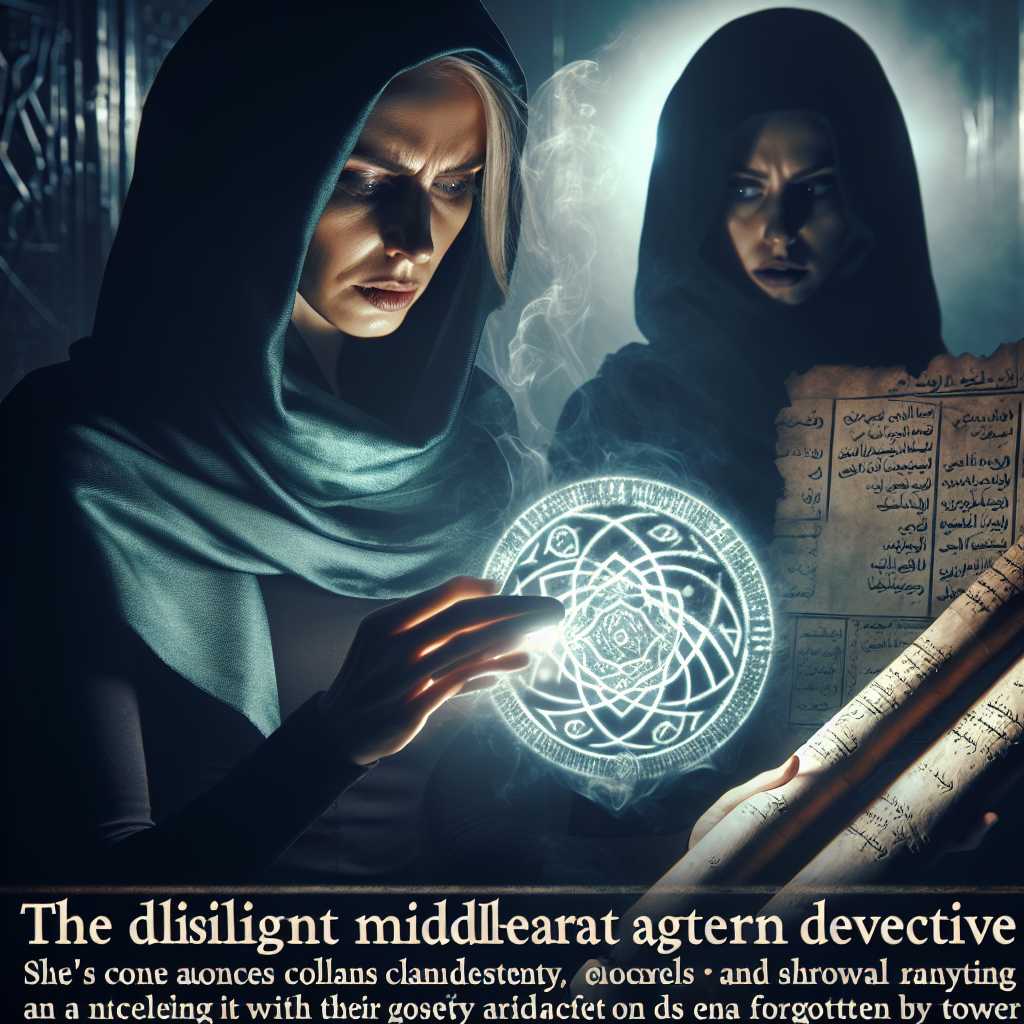
The moon, a mere sliver in the sky, cast elongated shadows across the cobblestone streets of the old town, illuminating the scene where our story unfolds. It was here, beneath the flickering light of a lone street lamp, that the lifeless form of Mr. Alfred Timmons, a well-to-do merchant known for his rare collection of antiquities, was discovered. The news of Mr. Timmons's untimely demise sent ripples of shock and awe throughout the community, for he was a man of great esteem, beloved by many, and envied by some.
Enter Detective Lillian March, a woman whose reputation for unraveling the most convoluted of mysteries was known far and wide. Her arrival at the crime scene was met with anxious anticipation. With a keen eye, she surveyed the area, noting each detail with meticulous care. The body, she observed, bore no visible signs of struggle, save for a single, deep wound that seemed almost too precise.
"A curious case, indeed," Detective March mused aloud, her voice a mere whisper in the silent night. "But fear not, for the truth, however deeply buried, shall be unearthed."
As the investigation unfolded, a tapestry of secrets began to unravel, each thread leading Detective March deeper into a labyrinth of lies and deceit. The first clue came in the form of a letter, its contents cryptic, found clutched in the cold hand of Mr. Timmons. The letter spoke of a meeting, a transaction of sorts, involving an artifact of great value and even greater danger. It was signed with a symbol, a phoenix rising from the ashes, the significance of which remained a mystery.
"Drawn to the flame yet fearful of the fire," murmured March, her mind racing.Her inquiries led her to the underbelly of the city, a place where shadows whispered, and loyalty could be bought with a handful of coins. It was here, amidst the clandestine gatherings of thieves and smugglers, that Detective March discovered the existence of a secret society, known only to a select few. This society, she learned, dealt in the trade of forbidden artifacts, objects of immense power that many would kill to possess.
"Mr. Timmons's collection," she realized, "was not merely for display. He was a player in a game far more dangerous than any could have imagined."
But with every clue that brought her closer to the truth, the peril that shadowed her steps grew ever more threatening. An attempt on her life, swift and silent like a specter in the night, served as a grim reminder that she was treading on hallowed ground. Yet, undeterred, Detective March pressed on, her resolve unshaken.
It was in the depths of the night, within the confines of an ancient library, that the final piece of the puzzle revealed itself. Hidden among the tomes of forgotten lore, Detective March uncovered an ancient manuscript. Its pages, yellowed with age, spoke of a relic known as The Heart of the Phoenix, an object of untold power believed to grant its possessor immortality.
"The artifact Mr. Timmons acquired," she whispered, her eyes alight with revelation.
The manuscript detailed a ritual, one that required a sacrifice in order to unlock the relic's full potential. With horror, Detective March realized that Mr. Timmons's death was no mere murder; it was a ritualistic killing, meant to awaken the power of The Heart of the Phoenix.
Armed with this knowledge, Detective March confronted the members of the secret society, her determination a blazing beacon in the darkness. One by one, they fell before her unyielding resolve, their secrets laid bare for all to see. The leader of the society, a figure shrouded in mystery, emerged from the shadows, his identity revealed: Theodore Crane, a rival collector, consumed by his desire for the ultimate prize.
In a confrontation that would become legend, Detective March and Crane faced off within the heart of the society's lair. Words were their weapons, truth against deceit, until, with a final revelation, Crane's resolve crumbled like ashes in the wind. The Heart of the Phoenix, he confessed, had been a fabrication, a myth spun into reality through the collective belief of those who sought its power.
The case of Mr. Alfred Timmons's untimely demise was closed, the truth unveiled for all to see. But in the aftermath of the investigation, as Detective Lillian March walked the silent streets of the city, she pondered the nature of belief and the lengths to which men would go in its pursuit. For in the end, the greatest mysteries lay not in the darkened corners of the world, but within the depths of the human heart.










